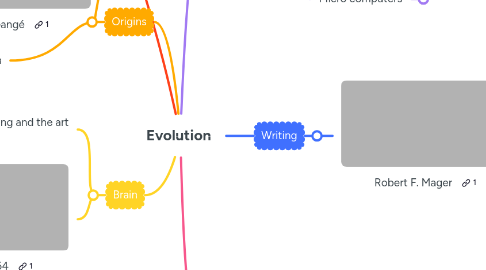
1. Writing
1.1. Robert F. Mager
1.1.1. 1960
1.1.2. desired learning with writing objectives
1.1.2.1. Criterion-Referenced testing movement
1.1.2.1.1. Competence Measures
2. Brain
2.1. The science of learning and the art of teaching
2.1.1. small steps
2.1.1.1. Self pacing
2.1.1.1.1. feedback
2.2. B.F skinner ,1954
2.2.1. Programed instructional movement
2.2.1.1. Conditions of behaviors
2.2.1.2. standard of which to be judged
2.2.2. completion of tests and knowledge
3. Teachnology
3.1. 40+ models
3.1.1. The need for new models
3.1.1.1. front end analysis
3.1.1.2. on the job preformance
3.1.1.2.1. business results
3.2. International
3.2.1. 1980 minimal higher education
3.2.2. Subordinate skills
3.2.2.1. identification
3.3. Computer based instruction
3.4. Micro computers
3.4.1. Knowledge management
3.4.1.1. Rapid prototyping
4. Origins
4.1. Robert Gangé
4.1.1. 9 events of Instruction
4.1.1.1. Subordinate skills
4.1.2. Reflects understanding of diverse learners
4.1.2.1. Identification
4.2. Design
4.2.1. WWII
4.2.1.1. Military program selection
4.2.1.2. Psychologists and educators
5. Concept
5.1. Ralph Tyler
5.1.1. Father of behavioraal objective movement
5.1.1.1. Benjamin Bloom
5.1.1.1.1. 3 types of learning
5.1.1.1.2. Heiarcheal relationship
5.1.1.2. Educational objectives
5.1.1.2.1. Cognitive Domain
5.1.2. Course direction
5.1.2.1. Basis for evaluation
5.1.2.2. Schools directions
6. Experimental
6.1. Flight training
6.1.1. Perceptiual skills
6.1.2. Intellect
6.2. Research
6.2.1. American Institutes for Research
6.2.2. System
